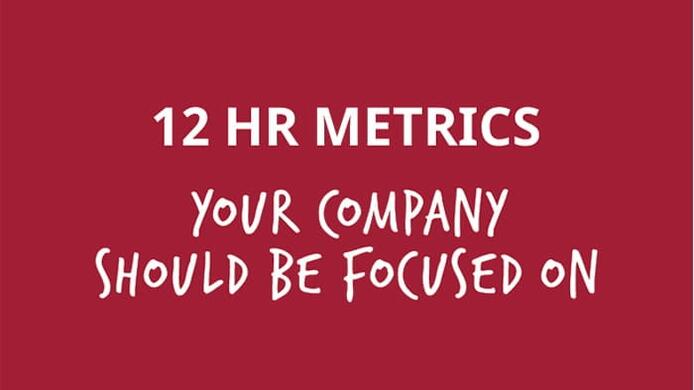Explore our resources for human resource degrees and learn about career options that fit your future.

If you thought human resources (HR) was mostly about interviewing candidates and hosting diversity trainings, think again. This discipline has grown and evolved significantly over the years, and there are many subfields within it.
The overarching goal of HR is to help employers build and maintain positive relationships with their employers, and vice versa. These days, HR professionals can choose to be either generalists or specialists. Generalists possess a wide range of skills and can handle multiple aspects of the HR needs at a company. On the other end of the spectrum are the specialists, who have deep expertise in one area of HR, like recruitment or benefits administration.
Curious about what goes on in a modern HR department? Keep reading to explore seven of the many ways HR contributes to employee – and company – success.
What Does HR Do? 7 Important Functions of Human Resources
Depending on the size of the company, an HR professional might perform one or several of the key functions of human resources outlined in the list below:
1. Recruiting, Hiring and Retaining Talent
Talent acquisition is one of the more well-known functions of any HR department. Making sure the workforce capabilities and performance match organizational goals is crucial for the health of the company. HR managers have to keep their finger on the pulse of the company to ensure personnel levels can meet demand. They must also be strategic when hiring for new roles or restructuring teams and make hard decisions about staffing.
Recruiting candidates: Finding the right person starts with accurate and detailed job descriptions. HR must analyze the market and set a competitive salary range before promoting available positions on any number of platforms. Typically, HR professionals will screen applications and resumes before deciding which candidates should move forward in the hiring process. From there, HR sets up one (or several) interview(s) with employees, managers, senior leadership and other key players.
Hiring employees: HR managers are usually in charge of performing background checks, onboarding new employees and explaining payroll, benefits and company policies. There is a considerable amount of important legal paperwork, recordkeeping and administrative responsibility involved in the hiring process. Making sure all the information is present, correct and properly protected is critical to the security of the employees and company.
Retaining talent: HR is also partially responsible for employee retention, which is often overlooked in the discussion around talent acquisition. According to research from the Society for Human Resources Management (SHRM), employees identified the following five factors as the leading contributors to their job satisfaction:
- Respectful treatment of all employees at all levels
- Trust between employees and senior management
- Opportunities to use their skills and abilities at work
- Compensation/pay Job security
2. Employee Engagement
The importance of setting up two-way dialogue and engagement between employees and HR or senior leadership cannot be overstated. It is the only way to build and maintain a vibrant company culture, one where everyone is united around shared goals, mission and values. Encouraging employees to discuss concerns or report a situation ensures that problems can be worked through as soon as possible, instead of snowballing into a potentially damaging situation.
Here are some HR activities that can build rapport and trust among leadership, management and employees:
- Recognizing individual and group achievements
- Sharing successes and failures
- Asking for feedback and listening to concerns
- Organizing company-wide gatherings
- Communicating new policies, decisions and strategic goals in a timely manner
- Mediating conflicts or tensions between employees
3. Performance Management
Performance management is the process of maintaining or improving job performance. Typically, this is done through the use of assessment tools, coaching and counseling, and providing continuous feedback.
How a company chooses to evaluate, coach and reward their employees varies depending on the unique characteristics of their workforce distribution, size and other factors. For example, a corporation with 40,000 employees across multiple states might use specialized software for remote team management. Whereas a small organization with 20 employees who all work in-person at a central location would have no need for such a tool.
4. Compensation and Benefits
Calculating fair compensation rates and putting together a comprehensive list of benefits is another big part of an HR manager’s job. After all, this is what employees are getting in exchange for their hard work. The goal is to create a competitive and attractive offer that aligns with the candidate’s experience and expectations. Many universities, including UMass Global, work with employers to embed education into their benefits packages.
Compensation refers to an employee’s yearly salary or hourly wage, while benefits vary widely and can include things like:
- Health insurance (e.g., medical, dental, vision)
- 401k opportunities
- Education benefits
- Parental leave
- Paid holidays Paid time off
- Sign-on bonuses
- Referral bonuses
- Relocation assistance
- Stock options
5. Development and Training
Offering ample opportunities for individuals to learn new skills and further improve their existing talents is advantageous to the company and employees alike. Robust professional development programs can have positive effects on employee productivity, enhance performance, increase opportunities to promote from within, and reduce turnover rates. When employees feel like their organization is investing in their growth, they are more likely to engage with and shape the company culture for the better.
HR is also responsible for providing training sessions that align with the organization’s strategic goals and legal responsibilities. For example, HR departments often coordinate company-wide informational sessions or seminars around important topics like:
- Diversity, inclusion and equity in the workplace
- Recognizing and reporting sexual harassment
- Mandated reporting
- Emerging technology
- Industry and marketing trends
6. Risk Management
Another key function of human resources is identifying, assessing and resolving short- and long-term risks before they become a real threat. This serves to protect both the employees and the company. While risk management isn’t typically the sole responsibility of HR professionals, they play an important role in the process.
Some examples of how an HR department mitigates organizational risk include:
- Properly training managers and collecting anonymous feedback from their direct reports
- Implementing measures to maintain or increase diversity
- Working with IT to ensure data and sensitive records are secure and private
- Accurately tracking, updating and protecting employee records
- Investigating complaints and allegations of harassment, racism, sexism, favoritism, etc.
7. Audits and Legal Compliance
The laws on matters such as labor, benefits, fair compensation, hiring and firing are complex. They also vary by state and are subject to change periodically. Knowing and following state, federal and local regulations is necessary for the success of any organization.
According to the SHRM, most lawsuits can be traced to issues related to hiring, performance management, employee discipline or termination. Other high-risk areas include:
- Outdated labor and employment law posters
- Poorly maintained or inadequately protected personnel fields
- Insufficient record retention
- Inaccurate wage/hour/time records
A savvy HR department avoids any notion of wrongdoing by conducting regular compliance audits to evaluate internal policies and procedures and ensure best practices are being followed.
Find Your Place in the HR World
You may be surprised to learn about the many different functions of human resources. Professionals in this sector are integral to the success of organizations and their employees. If you could see yourself thriving in one or many of these areas, perhaps you have a future as an HR professional.
Check out "How to Become an HR Manager" for a detailed guide on the education, skills and experience you need to pursue a rewarding career in this field.








